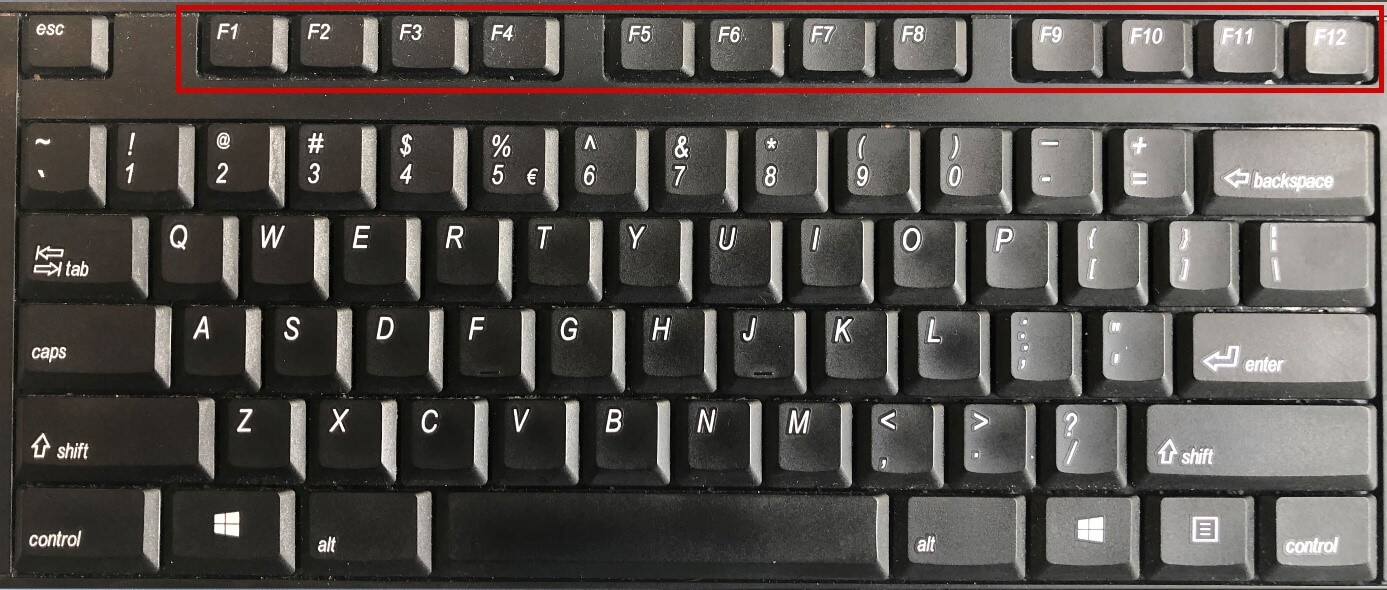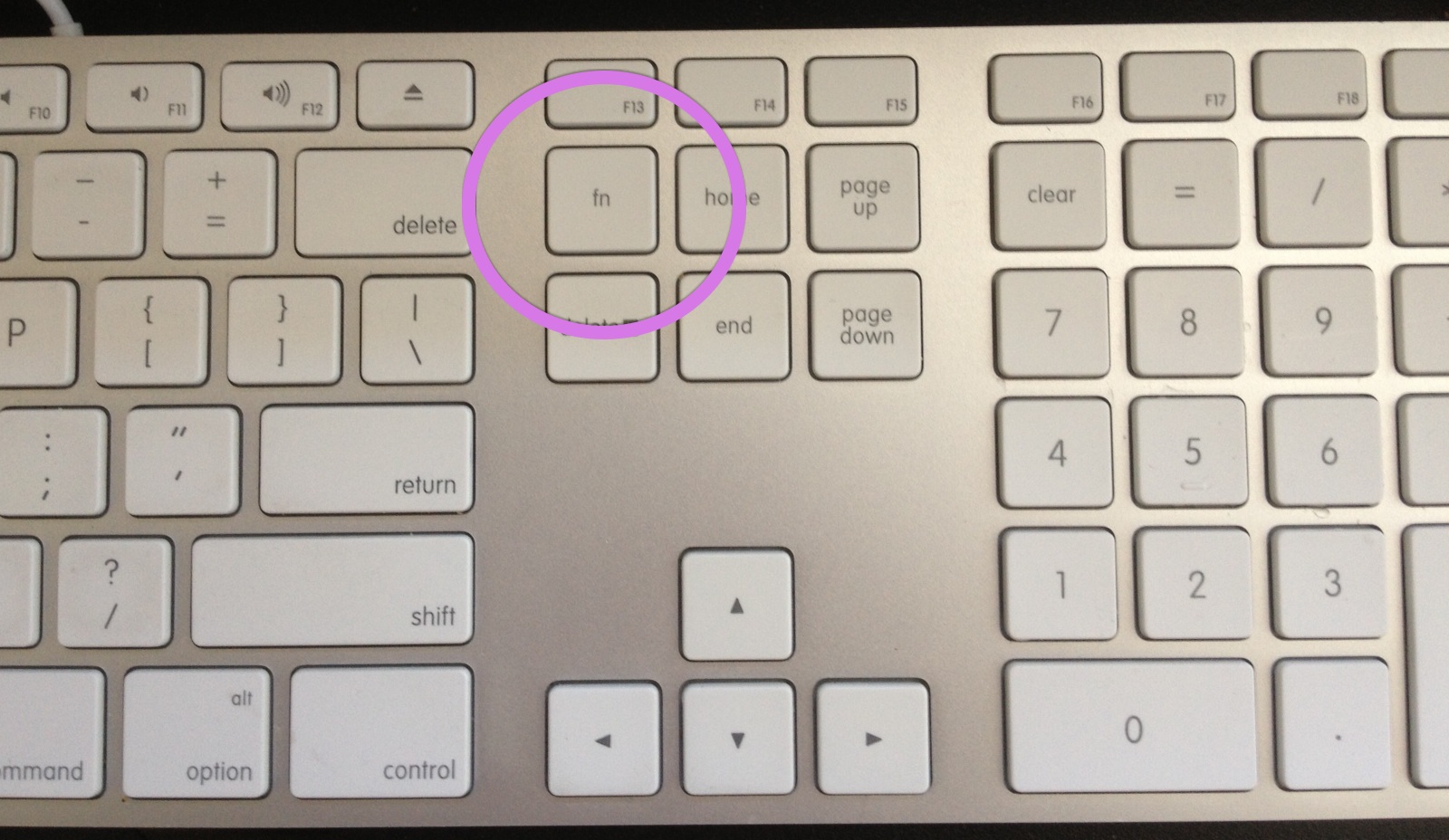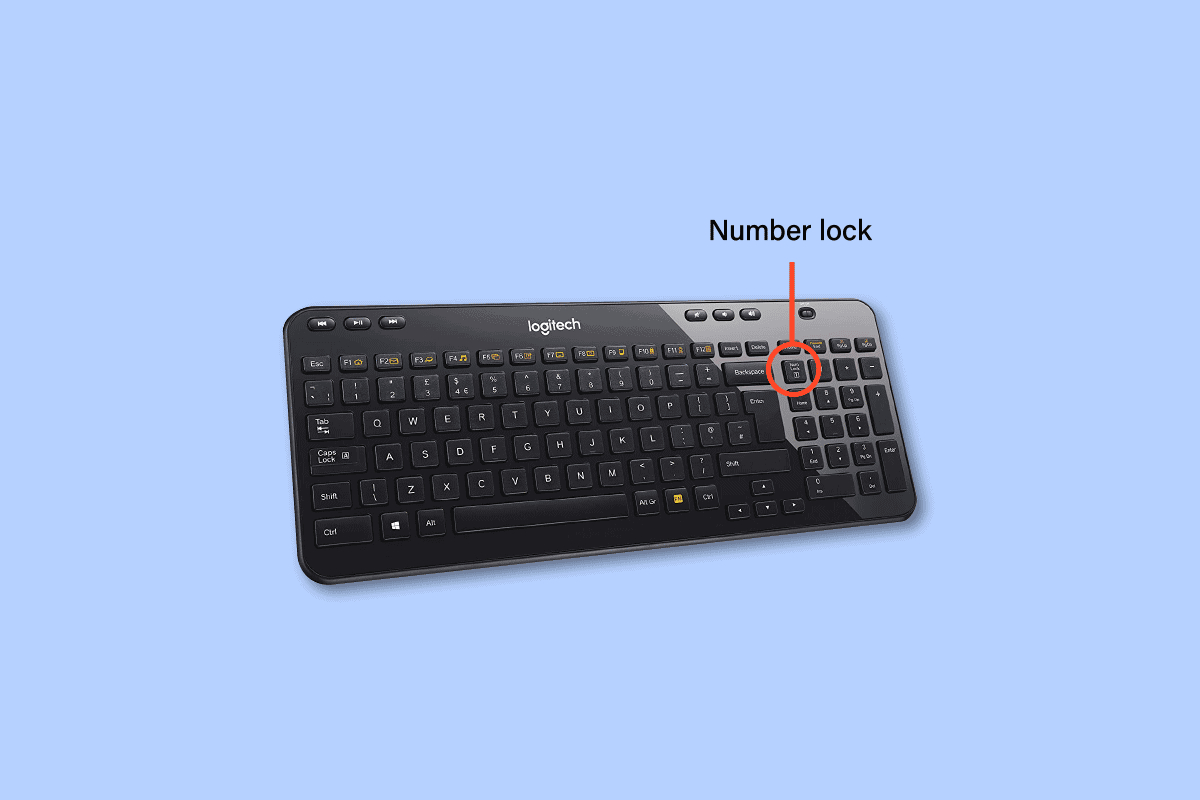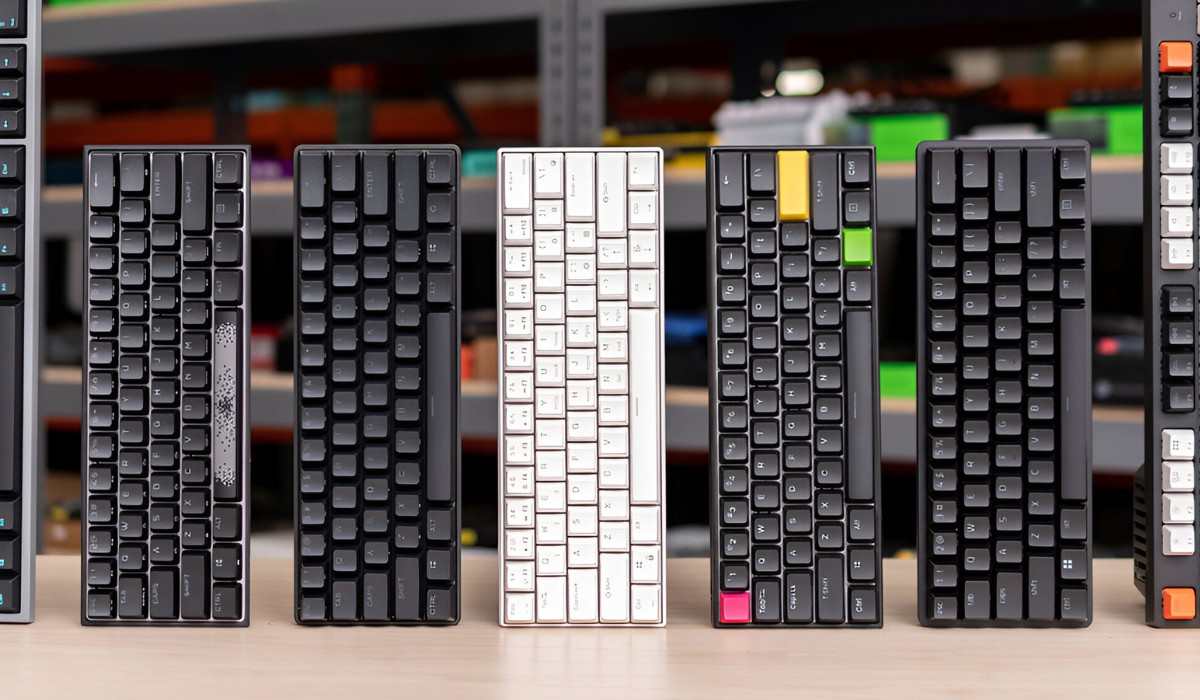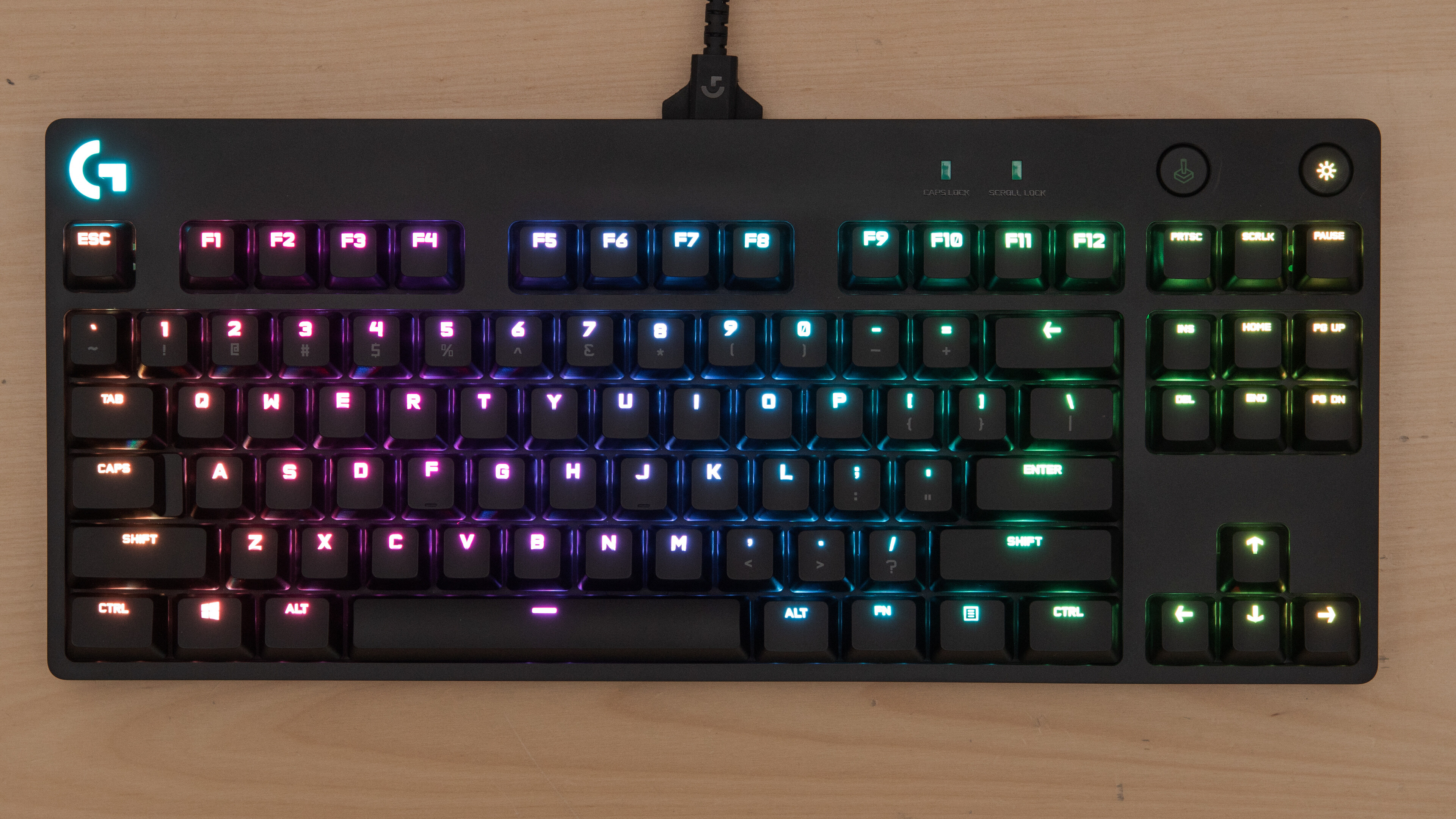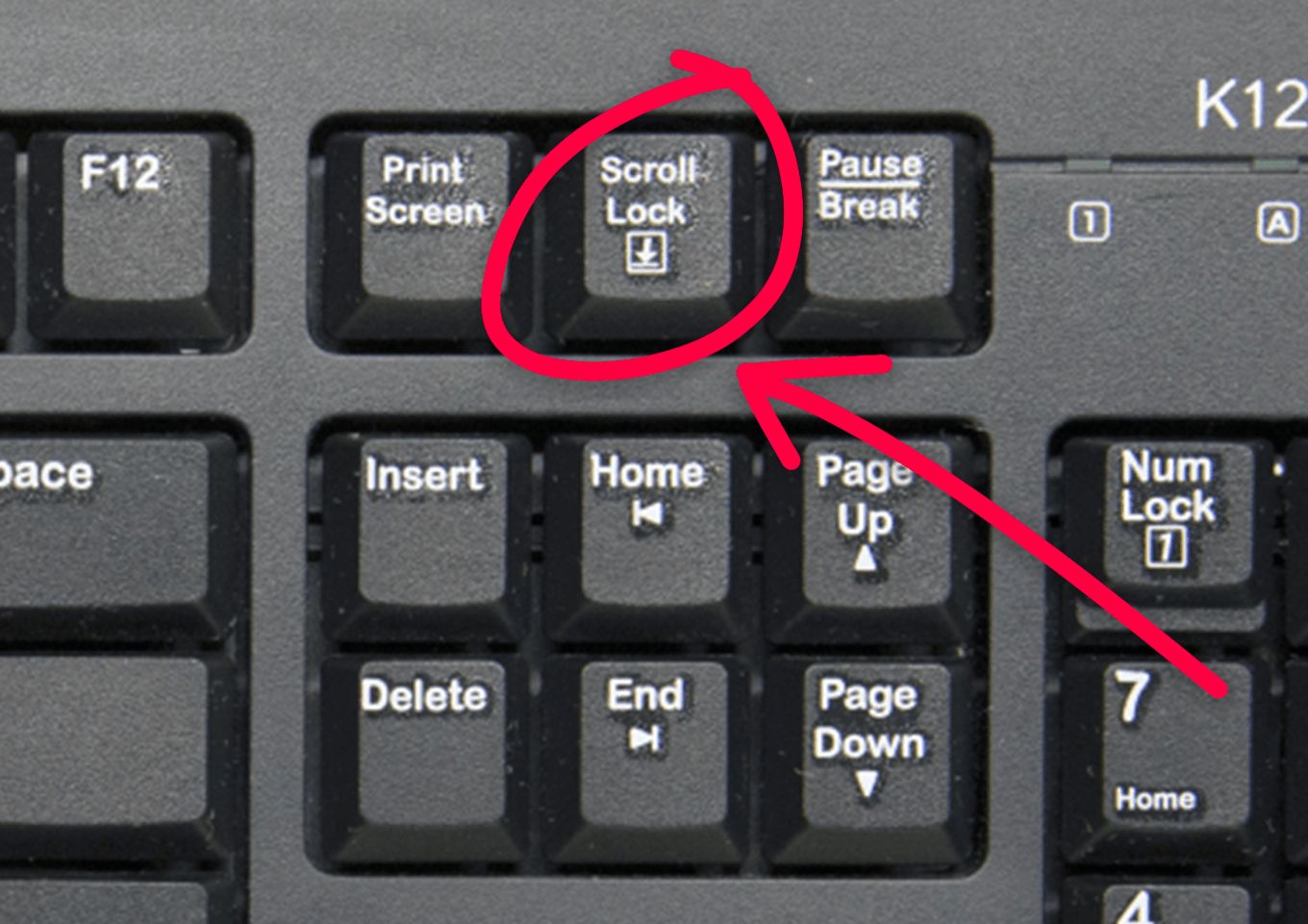Introduction
Welcome to the world of keyboards, where function keys play a crucial role in enhancing productivity and convenience. Whether you are a computer newbie or a seasoned user, understanding the function keys on a keyboard is essential for getting the most out of your device. These keys, typically located at the top of the keyboard, offer a range of functions that can simplify your work and streamline your workflow.
In this article, we will explore the various function keys on a typical keyboard and delve into their individual purposes. From F1 to F12, each function key has its own unique set of capabilities that can save you time and effort when navigating through applications, performing tasks, or accessing important features.
Although the primary functions of the function keys are consistent across most keyboards, it’s important to note that their functionalities may vary depending on the operating system and the specific software being used. So, let’s dive into the world of function keys and discover the hidden potential they hold.
Function Keys Overview
Function keys, labeled F1 through F12, are a set of keys found on most keyboards. These keys have a range of functions that can vary depending on the operating system and software you are using. Here is an overview of what each function key typically does:
- F1: The F1 key is often used as a help key. Pressing it within an application can provide context-specific information or open a help menu. In some programs, it can also act as a shortcut for common tasks.
- F2: The F2 key is commonly used for renaming files or folders. When you select a file or folder and press F2, you can quickly edit its name without having to go through additional steps.
- F3: The F3 key is frequently used to search for text within various applications and operating systems. By pressing F3, you can initiate a search and quickly locate specific information or files.
- F4: The F4 key has different functionalities depending on the program and operating system. In some applications, it can open a dropdown menu with a list of recently used items. In combination with the Alt key, it can also close an active window or exit a program.
- F5: The F5 key is commonly used to refresh or reload a webpage or document. Pressing F5 can update the content to display the most recent changes or retrieve any new data.
- F6: The F6 key has various uses across different programs. In some web browsers, it can be used to highlight the address bar, allowing you to quickly type in a new URL. In certain word processors, it can move the cursor to different parts of a document.
- F7: The F7 key is often associated with spelling and grammar checking. It can initiate the spell check feature in word processors or provide grammar suggestions in certain applications.
- F8: The F8 key is primarily used during the boot-up process of a computer. It can access the advanced startup options, allowing you to troubleshoot or enter safe mode. In some applications, it can pause or resume a task.
- F9: The F9 key has different functions depending on the program and operating system. In some spreadsheet applications, it can recalculate formulas. In certain email clients, it can send and receive messages.
- F10: The F10 key is often used in combination with the Shift key to access the menu bar of certain applications. It can also activate the boot menu during the computer’s startup process.
- F11: The F11 key is commonly used to enter or exit full-screen mode in web browsers. It can provide an immersive viewing experience by hiding the browser’s toolbar and other elements.
- F12: The F12 key has various functions depending on the program and operating system. In some web browsers, it can open the Developer Tools, allowing developers to inspect and debug web pages. In certain word processors, it can open the Save As dialog box to save the current document with a new name.
Understanding the various functions of the function keys can greatly enhance your productivity, streamline your workflow, and make your computing experience more efficient. So, let’s take a closer look at each function key and unleash the potential they hold.
F1 Key
The F1 key, commonly labeled as “F1” on most keyboards, is one of the most frequently used function keys. Its purpose may vary depending on the software or operating system you are using, but its primary function is to provide help and assistance when needed.
When you are working within an application and uncertain about a certain feature or function, pressing the F1 key can bring up context-sensitive help. This help feature provides you with relevant information, tutorials, or documentation specific to the application or task at hand. It can be a valuable resource, especially for beginners or when encountering unfamiliar features.
In addition to providing help, the F1 key can also serve as a shortcut for certain common tasks. For example, in many web browsers, pressing F1 can open the browser’s Help menu or bring up the browser’s support page. In various software applications, F1 can activate a specific function or display a list of available actions.
Some operating systems, such as Microsoft Windows, use the F1 key as a universal help key. Regardless of the application or software you are using, pressing F1 in Windows will generally open the Windows Help and Support Center, where you can find assistance on various topics, troubleshoot problems, and access online resources.
Overall, the F1 key acts as a support tool, providing you with the information you need to navigate through applications and perform tasks more efficiently. So, the next time you find yourself in need of guidance or assistance, don’t hesitate to reach out for help by pressing the remarkable F1 key on your keyboard.
F2 Key
The F2 key, often located at the top of the keyboard, is a versatile function key that serves multiple purposes across different applications and operating systems. Although its functionality may vary, the F2 key is commonly associated with renaming files and folders, providing a quick and efficient way to modify their names.
When you have a file or folder selected, pressing the F2 key allows you to directly edit its name without the need for additional steps. This can save time and effort, particularly when you need to rename multiple files or folders in a short amount of time. Simply select the item, press F2, make the necessary changes, and hit Enter to save the new name.
In addition to renaming files and folders, the F2 key can also be utilized in other applications for different purposes. For example, in spreadsheet software like Microsoft Excel, pressing F2 enables you to enter the edit mode for a selected cell. This allows you to directly modify the contents of the cell, making it easier to update or correct data without navigating through menus or toolbars.
Furthermore, some software programs may assign specific functions or shortcuts to the F2 key. It’s always a good idea to check the documentation or help resources of the specific application you are using to explore any specialized functionality associated with the F2 key.
Whether you’re organizing your files, making edits in a spreadsheet, or leveraging other software that utilizes the F2 key, knowing its capabilities can greatly enhance your efficiency and productivity. So the next time you need to rename a file or perform a specific function within an application, don’t forget to tap into the potential of the F2 key on your keyboard.
F3 Key
The F3 key, positioned at the top row of most keyboards, is a valuable function key that offers a convenient way to search for content within various applications and operating systems. While its specific functionality can differ depending on the program or system being used, the F3 key is commonly associated with initiating searches.
In many applications, pressing the F3 key will open a search dialog or activate the search feature. This allows you to quickly locate specific information, files, or documents without the need to manually navigate through menus or search bars. Once the search dialog is open, you can enter your search query and the application will provide you with results that match your criteria.
One of the most common uses of the F3 key is within web browsers. When browsing the internet, pressing F3 will usually bring up the browser’s search bar, commonly known as the “Find” or “Search” bar. From there, you can type in a keyword or phrase, and the browser will highlight any instances of that term on the current webpage. This can be particularly helpful when looking for specific information on lengthy web pages.
Beyond web browsing, the F3 key is prevalent in file management systems as well. In Windows Explorer or File Explorer, pressing F3 will open the search panel, enabling you to easily search for files or folders within a specific directory or across your entire system. This feature can save you time and effort when trying to locate a specific file amidst a large collection.
While the primary function of the F3 key is to initiate searches, it’s important to note that the exact behavior can vary depending on the application or system configuration. Some programs may utilize alternate keyboard shortcuts or assign different functions to the F3 key. Therefore, it’s always a good idea to consult the application’s documentation or help resources to understand the specific functionality associated with the F3 key.
By acquainting yourself with the power of the F3 key, you can enhance your efficiency and quickly find the information you need within applications and operating systems. So, the next time you’re searching for something, don’t forget to give the trusted F3 key a try.
F4 Key
The F4 key, typically situated at the top row of keyboards, serves a diverse range of functions depending on the operating system and software being used. Its functionality can vary, but one common use of the F4 key is to open dropdown menus or display a list of recently used items.
In many applications, pressing the F4 key can activate a dropdown menu, providing quick access to various options or actions. This can be particularly useful when navigating through complex programs with extensive menus. By simply pressing F4, you can reveal a menu that allows you to efficiently select the desired option without having to manually navigate through several layers of submenus.
Another common use of the F4 key is to display a list of recently used items. For example, in certain web browsers, pressing F4 can bring up a dropdown menu showing a list of websites that you have visited in the past. This convenient feature allows you to revisit frequently accessed websites without entering the full URL or searching through your browsing history.
In addition to dropdown menus and recently used items, the F4 key can also have alternate functions when used in combination with other keys, such as the Alt key. For instance, pressing Alt + F4 simultaneously is a common shortcut for closing the active window or exiting a program. This can be a quick way to tidy up your workspace or swiftly exit an application when you’re done using it.
It’s worth noting that the functionality of the F4 key can vary depending on the operating system and software you are using. Different applications may assign different actions or shortcuts to the F4 key, so it’s essential to refer to the specific program’s documentation or help resources to understand its unique functionalities.
Overall, the F4 key is a versatile function key that can streamline your workflow by providing easy access to menus, recent items, or essential actions. By leveraging the power of the F4 key, you can enhance your productivity and navigate through applications more efficiently.
F5 Key
The F5 key, prominently positioned on most keyboards, is a powerful function key that plays a significant role in refreshing content and updating information. Its primary purpose is to reload or refresh a webpage, document, or view, allowing you to access the most recent updates and changes.
When you press the F5 key within a web browser, it triggers a page refresh. This action prompts the browser to revisit the current webpage and retrieve the latest content from the server. This can be particularly useful when browsing dynamic websites or when you want to ensure that you are viewing the most up-to-date version of a web page.
In addition to web browsing, the F5 key also has significance in other applications and software. For example, in text editors or code editors, pressing F5 can run the code that you have written, allowing you to test and debug your programs in real-time. In spreadsheet applications, F5 can be used to access “Go To” or “Find and Replace” functions, helping you navigate through large sheets of data.
The F5 key is also employed in various software development environments. In integrated development environments (IDEs) like Visual Studio, pressing F5 initiates the debugging process, enabling you to step through your code and troubleshoot any issues. This functionality is essential for programmers and software developers.
Furthermore, in certain presentation software such as Microsoft PowerPoint, the F5 key is used to start or play a presentation from the beginning. This simplifies the process of showcasing slides and ensures a smooth and uninterrupted presentation experience.
It’s important to note that the exact function of the F5 key may vary depending on the software or application you are using. While refreshing content is its primary purpose, specific applications may utilize the F5 key for different functions or assign additional functionality through combinations with other keys.
By taking advantage of the F5 key, you can effortlessly refresh web pages, update data, test code, and enhance your overall user experience. So, the next time you need a quick update or want to ensure that you’re working with the most recent information, give the trusty F5 key a press.
F6 Key
The F6 key, positioned at the top row of most keyboards, is a versatile function key that serves different purposes across various software applications and operating systems. While its functionality can vary, the F6 key is commonly associated with providing quick navigation and editing capabilities.
In web browsers, pressing the F6 key highlights the browser’s address bar, also known as the URL bar. This feature allows you to easily type in a new website address or search query without having to use the mouse to click on the address bar. By simply pressing F6, you can start typing and navigate to a new webpage or perform a search with ease.
Furthermore, the F6 key is commonly utilized in word processing applications and text editors. Pressing F6 moves the cursor between different parts of a document or allows you to cycle through various pane or frame elements within the application’s interface. This can be helpful when you need to quickly switch between sections, headings, or different components of a document without using the mouse or scrolling through the content.
In some applications, such as spreadsheet software, the F6 key can be assigned to specific functions based on the context. For example, in Microsoft Excel, pressing F6 switches the active window between different components within the application, such as the workbook, ribbon, task pane, or formula bar. This enables efficient navigation and multitasking within the software.
It’s important to note that the functionality of the F6 key can vary depending on the operating system, software, or even the specific context within an application. Some programs may utilize alternate keyboard shortcuts or assign different functions to the F6 key. Therefore, it’s always recommended to consult the application’s documentation or help resources to understand the unique functionality associated with the F6 key within that specific program.
By leveraging the capabilities of the F6 key, you can streamline your workflow, navigate applications more efficiently, and reduce dependence on mouse interactions. So, the next time you need to quickly jump to the address bar in your browser or move between different sections of a document, give the versatile F6 key a try.
F7 Key
The F7 key, located on the top row of most keyboards, is a versatile function key that serves various purposes depending on the software and operating system you are using. Although its functionality may differ, the F7 key is commonly associated with spelling and grammar checking.
In many word processing applications, pressing the F7 key initiates a spelling and grammar check. This feature is invaluable for ensuring the accuracy and clarity of your written content. When you press F7, the application will scan your document for spelling errors, grammar mistakes, and punctuation errors. It will then provide suggestions or highlight the areas that require attention. This functionality can greatly improve the quality of your writing and save time by automatically detecting and proposing fixes for common errors.
Beyond spelling and grammar checking, the F7 key can have additional functions or alternate uses depending on the specific software you are using. In some applications, such as certain audio or video editing software, pressing F7 may open the audio mixer or provide shortcuts for controlling sound levels. Always consult the documentation or help resources of the particular software to understand the specific functionalities associated with the F7 key.
Furthermore, in some operating systems, the F7 key can be used to enable or disable certain accessibility features, such as caret browsing or screen reader modes. This provides enhanced accessibility options for individuals with visual impairments or other disabilities.
It’s worth noting that the functionality of the F7 key can be customized or modified in certain applications, allowing you to assign specific functions or shortcuts based on your preferences. This flexibility empowers you to tailor the functionality of the F7 key to suit your individual needs or workflow.
By understanding the capabilities of the F7 key, you can improve your writing accuracy, streamline the editing process, and enhance accessibility in certain scenarios. So, the next time you need to check your spelling or explore additional features, give the versatile F7 key a press.
F8 Key
The F8 key, situated on the top row of most keyboards, has multiple functions depending on the context in which it is used. Its functionality varies across software applications, operating systems, and even during the boot-up process of a computer.
One common use of the F8 key is during the startup of a computer. When pressed repeatedly just before the operating system begins to load, the F8 key opens the advanced startup options menu. This menu provides various options for troubleshooting, repairing, or entering safe mode. It can be a helpful tool for resolving startup issues or accessing alternative startup configurations.
In certain software applications, such as some video players or media players, pressing the F8 key can be utilized to pause or resume playback. This convenient shortcut allows you to easily pause a video or audio file when needed, and then resume playing it from the same spot. It provides efficient control over media playback with a single press of a key.
Moreover, some programming environments and integrated development environments (IDEs) assign specific functions to the F8 key. For example, in the Microsoft Visual Studio IDE, pressing F8 steps through code execution, enabling programmers to debug and inspect their programs line by line. This feature is crucial for identifying and resolving issues during the development process.
It’s important to note that the functionality of the F8 key can vary depending on the software and operating system. While the examples mentioned above represent common uses, specific applications may utilize the F8 key for different purposes or assign alternative functions based on the context or user preferences.
By familiarizing yourself with the potential functions of the F8 key, you can effectively troubleshoot computer issues, control media playback, or streamline the debugging process in programming environments. So, the next time you encounter a problem during startup or need to control media playback, consider the power of the F8 key as your go-to solution.
F9 Key
The F9 key, found on the top row of most keyboards, is a function key with various uses across different software applications and operating systems. While its exact functionality can vary, the F9 key is commonly associated with specific actions such as calculation, sending or receiving messages, or triggering custom functions.
In spreadsheet software, like Microsoft Excel, pressing the F9 key can trigger the recalculation of formulas within a worksheet. This is particularly useful when you have made changes to the data in your spreadsheet and need to update the calculations accordingly. By pressing F9, you ensure the accuracy and completeness of your calculations without the need to manually recalculate each formula.
In certain email clients or communication applications, pressing the F9 key can initiate the send/receive process. This action prompts the application to retrieve new email messages from your mailbox and send any pending messages in your outbox. This shortcut saves you time by quickly synchronizing your email correspondence with a single press of the F9 key.
Additionally, the F9 key is often reserved for triggering custom functions in specific software programs. These functions can be programmed by the user or built-in features of the application. For example, in some text editors or programming environments, pressing F9 can execute a script, compile code, or run a specific command. These custom functions help automate tasks and enhance productivity within the software.
It’s essential to note that the functionality of the F9 key is not standardized across all software applications or operating systems. Some programs may assign different actions or functions to the F9 key, or it may not have any predefined function at all. In such cases, it’s advisable to consult the software’s documentation or help resources to understand the specific functionalities associated with the F9 key in that particular program.
By leveraging the capabilities of the F9 key, you can streamline calculations, synchronize email communications, or trigger custom functions within software applications. So, the next time you need to recalculate formulas, send/receive emails, or activate a specific function, consider utilizing the versatile F9 key on your keyboard.
F10 Key
The F10 key, typically located on the top row of keyboards, serves various functions depending on the software application and operating system being used. While its functionality can vary, the F10 key is commonly associated with accessing menus and performing specific actions within applications.
One of the primary uses of the F10 key is to activate the menu bar of certain applications. When pressed, the F10 key typically highlights the menu bar, allowing you to navigate through different menus and access various commands or options. This can be a convenient shortcut, saving you time by eliminating the need to use the mouse to click on menu items.
In combination with the Shift key, pressing Shift + F10 can simulate a right-click. This action opens a context menu, providing a range of options specific to the item or area that you right-clicked. It’s particularly useful when you need to perform actions such as copying, pasting, deleting, or accessing advanced settings for a selected object.
Additionally, during the startup process of a computer, the F10 key can have significant functionality. Depending on the computer manufacturer and BIOS settings, pressing F10 at the appropriate time during the boot-up sequence can open the BIOS setup utility. This utility allows you to configure hardware settings, modify system preferences, or troubleshoot certain issues related to the computer’s hardware.
It’s important to note that the behavior of the F10 key can differ across various software applications and operating systems. Some programs may assign different actions or functions to the F10 key based on their specific functionality or user preferences. Therefore, always consult the documentation or help resources of the software application you are using to understand the unique functionalities associated with the F10 key.
By utilizing the capabilities of the F10 key, you can quickly access menus, perform right-click actions, or configure system settings during the computer’s startup process. So, the next time you need to navigate through menus or perform specific actions within an application, consider the utility of the F10 key as a valuable keyboard shortcut.
F11 Key
The F11 key, positioned on the top row of most keyboards, holds significance as a function key that is commonly associated with entering or exiting full-screen mode. While its specific functionality may vary based on the software application or operating system being used, the F11 key is typically employed to provide an immersive viewing experience.
One of the primary uses of the F11 key is within web browsers, where pressing it can toggle between normal browsing mode and full-screen mode. In full-screen mode, the browser expands to fill the entire screen, hiding the toolbar, tabs, and other elements. This allows users to focus solely on the content being displayed, providing a distraction-free browsing experience.
Besides web browsers, certain media players and presentation software also adopt the F11 key for similar purposes. In media players, pressing F11 can enable full-screen playback, maximizing the video or multimedia content to occupy the entire display. This offers a more immersive viewing experience without any clutter or distractions from the media player’s interface.
In presentation software like Microsoft PowerPoint, pressing F11 initiates a slide show from the beginning, displaying the slides in full-screen mode. This feature is particularly beneficial when delivering presentations, as it ensures that the audience’s focus is solely on the slides and content of the presentation.
It’s important to note that the functionality of the F11 key can differ across different software applications and operating systems. While full-screen mode is its common association, some programs may assign alternative functions to the F11 key based on their specific features or user preferences.
By leveraging the capabilities of the F11 key, you can optimize your viewing experience and immerse yourself in content-rich applications such as web browsers, media players, and presentation software. So, the next time you want to maximize your screen real estate and immerse yourself in a visual experience, consider the convenience of tapping the F11 key on your keyboard.
F12 Key
The F12 key, located on the top row of most keyboards, is a versatile function key with various functions depending on the software application and operating system being used. While its specific functionality may differ, the F12 key is commonly associated with actions such as opening developer tools, saving files, and accessing advanced settings.
One common use of the F12 key is within web browsers, where pressing it can open the browser’s Developer Tools. These tools provide developers with a set of features and capabilities for inspecting and debugging web pages. With the Developer Tools, developers can analyze the structure, layout, and performance of a webpage, as well as modify code and test changes in real-time.
In certain word processing or document editing applications, pressing the F12 key can open the Save As dialog box. This dialog box allows you to specify a new name or location for the current document, providing a quick and efficient way to save a file with a different name or in a different directory.
Furthermore, in some software applications, pressing the F12 key can provide access to advanced settings or configurations. This can be seen in various software development environments (IDEs) or programming editors, where F12 might be utilized to access project settings, define custom shortcuts, or open preference windows for fine-tuning the software environment according to the user’s needs.
It’s important to note that the specific functionality assigned to the F12 key can vary depending on the software application, operating system, and context. Different programs may utilize the F12 key for different actions or assign alternative functions based on their functionality or user preferences.
By exploring the capabilities of the F12 key, you can enhance your web development workflow, quickly save files with custom names, and access advanced settings within software applications. So, the next time you need to inspect a webpage, save a file, or access advanced configurations, consider the versatile F12 key on your keyboard.
Conclusion
The function keys on a keyboard, from F1 to F12, are powerful tools that can enhance productivity and streamline workflows. These keys provide various functions and shortcuts to perform common tasks, access menus, initiate searches, and perform application-specific actions.
Each function key has its own unique set of functionalities, and their specific uses can vary depending on the software application, operating system, or context. The F1 key serves as a help key, providing assistance and context-specific information. The F2 key simplifies renaming files and folders. The F3 key enables quick searches within applications. The F4 key opens dropdown menus or displays recently used items. The F5 key refreshes web pages or documents. The F6 key assists with navigation and editing. The F7 key aids in spelling and grammar checking. The F8 key offers advanced startup options and controls media playback. The F9 key executes calculations, initiates email synchronization, or triggers custom functions. The F10 key accesses menus and performs right-click actions. The F11 key enters or exits full-screen mode. Finally, the F12 key opens developer tools, saves files, and grants access to advanced settings.
To unlock the full potential of these function keys, it’s important to explore the unique functionalities associated with each key in the specific software applications you regularly use. Understanding their capabilities can significantly improve efficiency, productivity, and provide a more seamless and customized computing experience.
So, the next time you find yourself in need of assistance, quick access to a menu, or a convenient shortcut, don’t overlook the power of the function keys on your keyboard. By mastering these function keys, you can take your computing experience to the next level.







